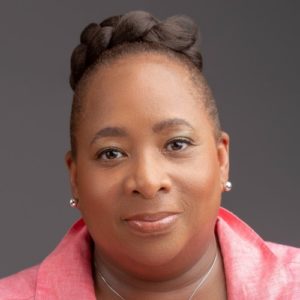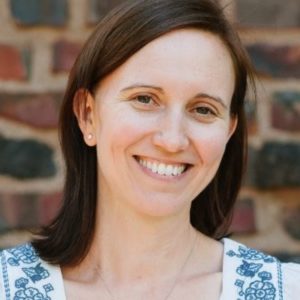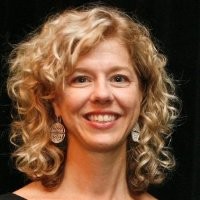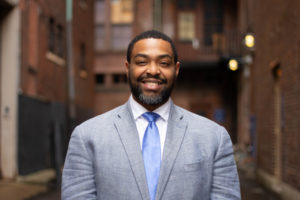What did ‘A Better Chicago’ do for poverty that could work in Philadelphia?
 February 24, 2021
Category: Featured, Long, Purpose
February 24, 2021
Category: Featured, Long, Purpose
Updates
Updated to correct a misspelling of Romens' name and timeframe for upcoming grants. (Febrruary 24, 2021 at 4:26 p.m.)Chicago legend states that former U.S. Education Secretary William Bennett galvanized the city’s school reform movement over 30 years ago when he labeled the district “the worst in the nation.”
Never mind the hyperbolic nature of the statement, the data-free soundbite, brushed-off by a Bennett aide as “close-enough” at the time, further pushed the urban-suburban divide. Corporate leaders successfully lobbied for school reforms, teacher strikes became a thing of the past, and newspapers such as the New York Times parroted a professorial class that argued Black children shunned education for fear of “acting white.”
Bennett built his vision of a better Chicago on accountability by swinging a big stick. History credits him as being the catalyst for change behind a bully pulpit despite others with more community-minded diagnoses being long-forgotten to the annals.
“We don’t know how to teach kids who don’t come from middle-class backgrounds with middle-class values,” Fred Hess, a professor at Northwestern University and director of the Chicago Panel on School Policy, said in 1987, according to the New York Times. Hess, who passed away 14 years ago, was one of the driving forces behind the Chicago School Reform Act of 1988.
“You would think that after 20 years of recognizing the problem, we would have some answers,” he continued. “But we don’t.”
Like most failed school reform movements, Chicago’s profit margin mindset transformed superintendents into CEOs and saw poverty and racial inequity as liabilities to be downsized and outsourced for maximum gain. Area nonprofits picked up the slack over the past few decades, reinserting a community mindset into the city’s backbone with the belief that education is still a powerful tool in the fight against poverty.
One organization, A Better Chicago, combined both ideas by incorporating accountability, measurement, and transparency into a venture philanthropy foundation that continues to close both the education and economic gaps in a region where over three-quarters of the students would go hungry without school meals and almost 17,000 are homeless.
According to A Better Chicago’s posted statistics, over 2,200 donor partners fight poverty, impacting almost 32,000 students every year at an estimated value of $40 million.
“Our organizations, they don’t just support the key outcomes that we talk about on our website — high school graduation, acceptance into college, college graduation, or even third grade, eighth grade reading or math,” said Kelly Jones, chief investment and strategy officer at A Better Chicago. “They’re really, really supporting the holistic growth of young people.”
Jones, who oversees the nonprofit’s portfolio work on new investments, told Generocity that the impact of A Better Chicago’s venture philanthropy goes beyond the individual and into the family unit. Transformation, she said, is about more than actual outcomes. According to her, real growth is about building confidence and watching it ripple throughout both families and the community.
“You’ll hear a young person talk about, ‘when I was in middle school, I was struggling, I wasn’t passing classes, I was having trouble getting along with my peers,’” explained Jones, who noted that A Better Chicago’s portfolio of programs is designed to guide students toward a more confident path.
“‘And then when I… found this program,’” Jones continued, describing her students’ reaction to her portfolio. “‘There were teachers who not just cared about me, but helped my mom figure out how to help me engage in school, helped me figure out I wasn’t the problem.’”
Philadelphia, infamously the poorest big city in the nation, has a complicated history, so much so that it’s affectionately called “The City of Neighborhoods” for its diverse enclaves and not-so-affectionately as “The City That Bombed Itself” for the 1985 attack upon one of them.
But several organizations, including The Fund for The School District of Philadelphia, GreenLight Fund Philadelphia, and Pew Charitable Trusts, have proven that what A Better Chicago did for poverty in its namesake city can be adapted to The City of Brotherly Love.
A Better Chicago’s vision
A 1961 Urban League report found that almost 400 classrooms in Chicago were vacant due to segregationist policies, a problem which led to overcrowding in Black schools throughout the district. According to the Chicago Tribune, the report also noted that Black schools received less than two-thirds of the funding than their white counterparts. Rather than integrate, then-Superintendent Benjamin C. Willis installed shoddy aluminum trailers in vacant lots to handle the overflow.
Known in Chicago lore as “Willis Wagons,” these 20-by-36-foot boxes, some of which were built mere blocks away from vacant classrooms in white schools, came to symbolize the city’s long-entrenched racial divide. The move sparked protests and demonstrations across the city, resulting in scores of arrests, including a young Bernie Sanders. By 1966 the effort grew, attracting Dr. Martin Luther King Jr. and his campaign for housing rights.
In 2021, A Better Chicago continues to dismantle systemic racism while keeping an eye toward a positive future for its students and portfolio of investments. The venture philanthropy fund reinvented the nonprofit sector, using measurement and transparency to fight the white supremacy that attempts to hold back Black voices in Chicago.
“We have also doubled-down on what it looks like to take our model and make sure that we are using it to find organizations that are often overlooked by traditional philanthropy,” said Jones. “And in the context of Chicago that often means community-based organizations that are led by Black and Latinx leaders that just don’t have the same social capital and networks as a lot of nonprofit leaders who maybe have come from other sectors.”
Founded in 2010 by former Bain & Company consultant Liam Krehbiel, A Better Chicago provides funding and management support to nonprofits in the education sector that show promise and need an extra push. The organization uses a business-like philosophy that prizes measurement and accountability, such as those celebrated by men like Bennett, but with a touch of humanity unheard of among the trickle-down economics set.
According to the data, A Better Chicago’s venture philanthropy model vetted 800 organizations on the road to building a portfolio of 18 grantees. All of them work toward the betterment of the city’s Black and Latinx youth.
Prospective grantees can apply to the program, but portfolio managers also keep an eye out for innovative interventions both within Chicago and throughout the broader region.
As Jones explained to Generocity, the application process places a low burden on potential suitors while still conducting a due diligence review. Overall, managers evaluate four criteria when selecting nonprofit partners, including the intervention itself, its impact potential, organizational leadership, and the possibility to scale.
But what separates A Better Chicago from standard school reform interventions is how accountability is baked into its model. Supportive measurement and transparency allow the organization to use education as a tool to fight poverty. It’s a unique approach in a system that often sees poverty as an impediment to education.
“This work is hard,” admitted Jones, in describing A Better Chicago’s rigorous measurement process. “It’s not always a linear path to impact.”
According to Jones, key outcomes are agreed upon with grantees from the outset of each partnership and reported on annually and even more frequently. She noted that donors will look for benchmarks so that, for example, A Better Chicago doesn’t report out on blanket graduation rates of a particular program. Portfolio managers will do a deep dive into their partner programs to see how students receiving an intervention perform relative to populations as a whole. If a partner program works with X number of students in a neighborhood, she said, the organization will compare their outcomes to those of the entire neighborhood.
“Part of our value is that donors are trusting us to invest their money,” she continued. “And so we want to be able to say here’s the decision we made and here’s how it’s going.” She noted that A Better Chicago believes in learning from its mistakes and that there’s value in digging into the data when things are not moving in the right direction nor the proper place.
“Figuring out why, trying to understand why, and sharing that with others so that that can be helpful to them,” said Jones, “that’s a really important piece of this too.”
The School District Fund’s vision for Philadelphia
Media-types labeled former Chicago Public School District CEO Paul Vallas a “turnaround specialist,” as much for his ability to transform failing schools as for his penchant to leave them. From the mid-aughts to the early-teens, Vallas made stops in Philadelphia, New Orleans, and Bridgeport, Conn., sweeping into town with a firebrand type of reform that challenged teacher’s unions and opened the floodgates to the for-profit, charter school movement. His motto was “do things big, do them fast, and do them all at once.”
Vallas swung a big stick, which he first brandished under former Chicago mayor Richard Daly. But the model he brought to Philadelphia — and other urban cities — left behind growing budget deficits and worsening graduation rates for Black and Latinx students.
Today, the nonprofit sector brings together public-private partnerships to bridge the funding gap for students in Philadelphia, allowing for donor accountability and more targeted assistance. The Fund for The School District of Philadelphia is a nonprofit that acts as an intermediary between private donors and the city’s public education system. And while it’s not a venture philanthropy outfit in the model of A Better Chicago, its vision for a better Philadelphia uses measurement and transparency to lift Black students and students of color out of poverty in new and innovative ways.
The Fund for The School District of Philadelphia is the only nonprofit with a direct connection to the Philadelphia School District and one of the few in the city putting students first.
“We support those things that are part of [Philadelphia School District Superintendent] Dr. Hite’s anchor holes, ensuring that kids are reading on grade level by the time they’re 8 years old,” said Donna Frisby-Greenwood, president and CEO of the fund. For example, Frisby-Greenwood noted that the fund raised $7 million for the district to support its Level Library initiative, which placed upwards of 600 books in every kindergarten through the third-grade classroom.
“In addition, we have also worked to provide some mini-grants to schools who come up with ideas to support those students who may be struggling a little bit with reading,” she added. “Whether it’s special ed students, Black or Latino students, English language learners, whoever it may be.”
Frisby-Greenwood’s operation focuses on several key areas, all of which are crucial to the fund’s overall mission. In addition to being a champion for the district’s strategic priorities, including promoting early literacy and even such things as filmmaking, the organization works to leverage partnerships across both public and private sectors. Here, Frisby-Greenwood’s philanthropic background, combined with a robust board, allows her room to breathe and shine.
What’s most important is how the fund manages financial assistance through accountability and oversight, maximizing donor impact to students, the District, and the broader poverty issue as a whole. Whether a donor contributes $100, $10,000, or $100,000, The Fund for The School District of Philadelphia can ensure the money is used correctly.
“We ensure that [the money] gets spent in the way that the donor wishes for it to be spent and make sure that we get the donor reports around how the funding was spent [and] what the impact was,” said Frisby-Greenwood, who explained to Generocity how the fund’s accountability process is central to its mission. “Sometimes we work with the School District to get those reports and the School District actually does the work but we ensure that donors are getting the information that they need around their investment.”
Like A Better Chicago, which shifted gears at the beginning of last year to accommodate the needs of those affected by the pandemic, The Fund for The School District of Philadelphia can adapt to a changing philanthropic environment as required. When COVID-19 hit last year, Frisby-Greenwood led an effort to double the number of Chromebooks in the district, giving students an opportunity to continue their education virtually, which they otherwise would not have had.
“Middle-income district, and upper-middle and upper-class school district kids already had Chromebooks,” Frisby-Greenwood,said, adding that kids in Philadelphia, along with low-income children across the nation, faced a crisis at the start of the pandemic. “Our district moved fairly quickly.”
“Having the support of the city of Philadelphia really helped as well,” she continued.
Two different visions for the city
Philadelphia’s poverty problem is so pervasive that the City Council recently took a break from debating potholes and property taxes to propose long-term, sustainable solutions.
Politicians even put the pandemic on hold because the statistics are so overwhelming. Almost one-quarter of the city’s residents live below the federal poverty line, including one out of every 2.5 children, and an average of 1,500 families struggle with housing insecurity every year. Children outnumber adults in area emergency shelters by about two-to-one.
In a city of neighborhoods where geography and race separate the haves and have-nots, poverty remains, for too many, an issue in the abstract. Chicago is a well-off town with a poverty problem. Philadelphia is poor.
A Better Chicago’s vision for accountability in the fight against poverty is replicable in a place like Philadelphia, but the question remains whether or not area nonprofits can swing a big enough stick to scale up and tackle the problem. Few organizations have the ability; fewer still have the will.
Some groups make progress, using either a venture philanthropy foundation or straightforward grant model replete with managed oversight, including well-known nonprofits such as Pew Charitable Trusts and the GreenLight Fund. Through its Fund for Health and Human Services, the former initiated two new grant programs to help Philadelphians meet their basic needs in light of ongoing food and housing insecurity crises. Through intense measurement and transparency, Pew hopes to support emerging and established nonprofits grow and scale.
“One of the interesting things with Growth Grants is that the business planning process is critical in helping [grantees] determine what their tangible milestones and metrics will be,” said Kristin Romens, who directs the Pew Fund for Health and Human Services in Philadelphia. Growth Grants, as she described to Generocity, extend for about five years, can cover anywhere between $750,000 and $4 million, and are designed to help a local organization’s long-term expansion efforts. According to Romens, Pew is hoping to have an announcement about its first Growth Grant recipient soon.
Venture Grants, on the other hand, are made for up-and-coming nonprofits that need an extra push. As Romens explained, accountability looks different for an organization that’s less established.
“We do try to look at a combination of outputs and outcomes, understanding that some of the outcomes may not be as well-defined as an approach that’s been around for decades,” she said.
Perhaps the best proof-of-concept for A Better Chicago’s model in Philadelphia is GreenLight Fund Philadelphia, the city’s venture philanthropy organization led, for the past few years, by Omar Woodard (who announced his intention to step down from the role in March of this year). If anything, GreenLight Fund might be more successful than its counterpart in the Windy City, having established franchise locations in urban centers across the country, each with a bountiful portfolio of nonprofit investments that meet the needs of the unique region in which it resides.
Like A Better Chicago, accountability, measurement, and transparency are baked into the GreenLight Fund model because of a sincere desire to make a difference.
“We have built-in accountability because we don’t have an endowment to go back to and [our community] needs to know that we are getting the results that we promised,” said Margaret Hall, GreenLight Fund’s CEO, and cofounder. She explained that The Fund seeks donations directly from the community, fueling their desire to report accurate results.
GreenLight Fund Philadelphia continues to exceed expectations. In a city where 40% of children live in poverty, the organization amassed an investment portfolio of five nonprofits, reaching almost 5,000 individuals and families over the past year. They announced the $3.5 million GreenLight Philadelphia Fund III last September and spent a decent portion of the past year tackling the additional problems brought on by COVID-19.
And, according to Hall, they stay grounded with a community-mindset. To the GreenLight Fund, accountability isn’t all about numbers.
“We also have accountability to the community through our Selection Advisory Council, which is a group of community leaders, cross sector, across socio-economic backgrounds that are holding us accountable to get the needs right and get the results that we’re promising as well,” said Hall.
The GreenLight Fund model is similar to, if not the same as A Better Chicago’s. Their portfolios are built on the need for transformation with effective, sustainable nonprofits using a due-diligence process that seeks out innovation and hands-on oversight that promotes high-impact change. As Woodard told Generocity, the process is uniquely designed to tackle poverty at systemic levels in a city like Philadelphia.
“We’ve only invested in Philadelphia $4.2 million dollars,” said Woodard, noting the disparity with other foundations having invested as much as $10 million to upwards of $50 million in the city. “But what we’ve been able to do with that $4.2 million is leverage $19 million in public and private funding as follow-on to go directly into those organizations.”
According to Woodard, GreenLight Fund isn’t trying to puff its chest or supplant any other nonprofits with large dollar amounts. The organization’s goal is simple, he said. Everyone at GreenLight Fund wants to guide funds from the public and private sectors into poverty-fighting programs.
“We now have evidence of impact,” he continued. “We know [our fund] works and so because of that we’re giving confidence to the nonprofit sector, philanthropic sector in the business community.”
A better vision for Chicago Scholars
In 1997, Mayor Daley promised the residents of Chicago’s Little Village community, a Mexican-American neighborhood, that he would build them a new school, only to backpedal upon winning reelection. Over the next few years, as the city erected several new selective-enrollment schools, parents did what they could to gain the mayor’s attention, from board meetings to sit-ins to hiring Mariachi bands to sing kitschy songs. It took five years and a 19-day hunger strike by 14 demonstrators, known at the time as huelgistas, for the community’s demands to be heard.
Years later, lead organizer Tomás Gaete continued to criticize the Chicago Public Schools’ handling of the situation, along with its perpetual efforts to diminish the school’s “social justice and community-oriented” foundations.
“Public education has been deemed a ‘failed experiment’ desperately in need of innovation,’” wrote Gaete in a book detailing his experiences. “Despite minimal success, these ‘innovations’ have resulted in further marginalization of communities that have historically had the least access to resources and state infrastructure.”
A Better Chicago’s vision for a better Chicago understands that marginalized communities can become victims of sweeping, state-wide innovations and looks for portfolio investments with a sincere understanding of the Black and Latinx experience in America. Building a more equitable city is at the core of their mission.
One such program is Chicago Scholars, a seven-year transition to college, postgraduate, and career program for the city’s most under-resourced youth.
“One of the things that we believe in at Chicago Scholars is that education is social justice,” said COO and President Brooke McKean. A two-year veteran of the organization, McKean deals with the day-to-day operations.
As McKean told Generocity, students in Chicago Scholars are first-generation college students from low-income households. According to her, they come from every zip code in the city, hoping to gain leadership skills and mentorship opportunities that will make them Chicago’s next generation of leaders.
“Our vision is a vibrant Chicago powered by diverse leaders from every neighborhood,” she continued. “We believe that Chicago will be a stronger, better, more equitable and vibrant city as our scholars become leaders in their communities and careers.”
To date, the program’s model continues to produce incredible successes. McKean noted that with over 4,000 scholars and alumni impacted by their work, Chicago Scholars has a graduation rate of 86% within six years. Of that number, almost 96% matriculate on-time to college, and 95% persist toward their second year of college. Additionally, 77% of alumni engage with community organizations, compared with 30% of students nationally.
While much of that success can be attributed to the Chicago Scholars model, a good portion of it goes toward their relationship with A Better Chicago.
McKean noted that the venture philanthropy organization gives them a stamp of approval in the nonprofit space. Not only has A Better Chicago helped Chicago Scholars leverage funding opportunities, but the parent organization has also played a key role in strategy sessions and developing the latter’s strategic plan.
“A Better Chicago has this really robust reporting system and process that really, in detail looks at our student outcomes and college level outcomes, breaking it out in many different ways,” said McKean. “It helps us carefully analyze our work and drill down to what’s successful. what isn’t, [and] what can we do better.”
As for the future, A Better Chicago is looking toward the end of the pandemic and bracing itself for the recovery, a process which might be long and arduous on its own. But like they have for the past year, donors, students, and grantees continue to step up in new and innovative ways.
Asked whether or not their model and what it’s done for poverty in the windy city can be replicated in Philadelphia, Jones said it could, without a doubt.
“We are really lucky that when our founder was getting A Better Chicago up and running there were a couple of larger, longer standing venture philanthropy funds that were really incredible partners to him as he thought about getting our model going,” said Jones. “Over the past couple of years we’ve seen similar models get started in other cities.”
“If there’s somebody or an organization in Philly that is excited to get something similar rolling, please do not hesitate to connect them with us, because nothing is more exciting than when we can be helpful in bringing what we know works for this model in our own context [to] help other people,”
“It really is a powerful piece of the puzzle. It’s not the only piece of the puzzle, but it’s a powerful piece of the puzzle.”
 Generocity is one of 22 news organizations producing Broke in Philly, a collaborative reporting project on solutions to poverty and the city’s push toward economic justice.
Generocity is one of 22 news organizations producing Broke in Philly, a collaborative reporting project on solutions to poverty and the city’s push toward economic justice.
Project
Poverty Action seriesTrending News













